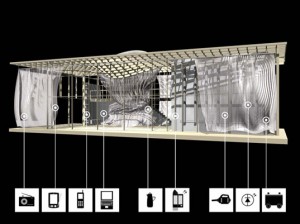blog at the Washington Post: “In This Case, Rumsfeld was right”: (I’m quoting at length because Arkin writes better, and I’m not sure how much to pare away without distorting a nuanced point)
If there were a musical about the Pentagon today, the opening number and reprise would be “If Rumsfeld Was for It, We’re Against It.”
Witness the portrayal of the reversal of a “controversial” plan by the former secretary of Defense, first reported in the New York Times last week, to use special operations forces as the lead element in the war against terror.
There is a lot wrong with the way the United States has been “fighting” the war against terror in the past seven years, and there is much wrong with the special operations aesthetic. But any push to reduce their role and turn over counter-terrorism to the conventional military instead is wrong in every way.
I have often criticized special operations for being too secretive and for a lack of basic accountability; for pursuing a “direct action” (read: head-hunting) approach to counter-terrorism that is circular and never-ending; and finally for believing their own P.R. about how great they are. But the “quiet warriors,” as they often call themselves, are just the right element of the military to contribute to counter-terrorism efforts.
If there’s going to be a “war” against terrorism, it needs to be quiet and stress the non-military. This means a small military footprint and fewer bases and a fully coordinated “interagency” and international effort. For all this, the Army and Marines are just too much of a blunt instrument. Haven’t we learned that blundering out there, as we are blundering in Iraq, just confirms our desire for subjugation and empire in the minds of far too many in the Islamic world?
First the news: As reported in the Times, Special Operations Command, which under presidential directive has been given authority to conduct independent counter-terrorism missions, is supposedly backing off of this unilateral role and focusing on working with regional commanders to conduct joint operations. Adm. Eric T. Olson, the new special operations commander, says that he will continue to play the role as counter-terrorism coordinator around the world, a “shift” that the Times suggests means the old Rumsfeld way is dead and that special operations command will not conduct unilateral operations.
In some ways the news is unremarkable.It is simply impractical for special operations forces to do their own thing without coordinating fully with the regional commands and the CIA and the conventional forces, particularly in Iraq and Afghanistan, where 90 percent of the effort is expended. In fact in Iraq the coordination has become so intimate that a two-star special operations forces general has been deployed there to coordinate at the highest level of the military command, a level of collaboration that has proven more useful and productive.
– snip –
So are special operations forces being spanked getting some comeuppance? I don’t think so. For all the changes, the super-secret “Delta Force” and commando and intelligence teams of the Joint Special Operations Command, the elite of the elite, are going to continue to conduct unilateral operations and go where the conventional military — even the conventional Special Forces — can’t. Of course, to be effective, they have to coordinate with the regional commanders, the CIA and State Department, FBI, etc. Duh.
– snip-
That doesn’t necessarily mean it should be the Pentagon’s job, and it certainly doesn’t mean that Rumsfeld was able to implement a sensible plan through all of his megalomania. But a shift of the conventional military to a global counter-insurgency focus? If this is the plan, both our counter-terrorism efforts and our military needs will be weakened.
William Arkin’s Early Warning blog at the Washington Post is morphing into a weekly column and discussion group. That’s probably good for Arkin – and Arkin’s work once a week is still a lot better than no Arkin at all.

